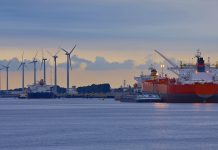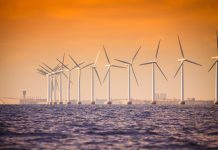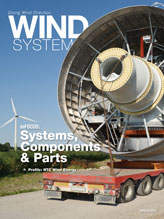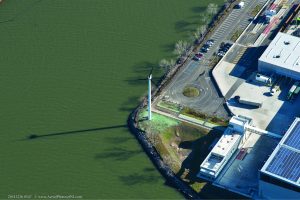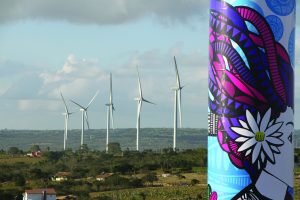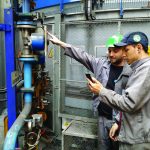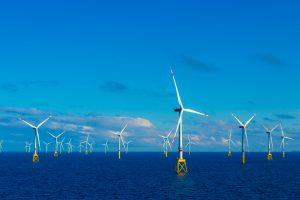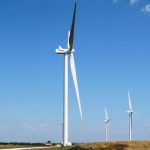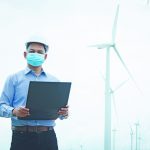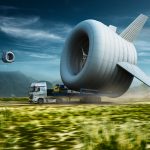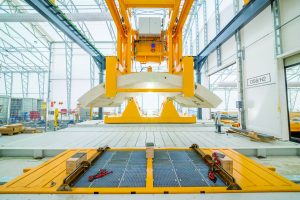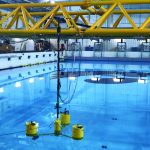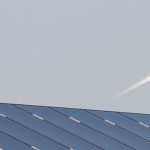The science behind producing renewable energy may sometimes seem like magic.
That bit of poetic license has not been lost on the creative team behind Accio Energy.
It’s with a wink and a wave of a metaphorical wand that it takes its name from the summoning spell used in the world of Harry Potter: Accio.
“We are inspired by Harry Potter,” said Accio Energy CEO Jennifer Baird. “It’s a summoning spell, and we think that sometimes what we’re doing is summoning energy out of the air.”
Accio Energy’s logo even contains a lightning bolt — if the Harry Potter spell reference was a little too vague.
But lightning also can be a symbol for electricity, and Accio Energy’s power-producing technology actually has a lot in common with a storm as it produces electrohydrodynamic (EHD) wind energy.
Emulating Nature
“It works with physics that are similar to a thunderstorm,” Baird said. “In a thunderstorm, you have rotating winds that separate positive and negative charges at the top and the bottom of a cloud. That builds up a large electrical potential and eventually you get a bolt of lightning. In our technology, we’re pumping seawater up into a whole series of panels, and the wind is actually blowing through that panel as the panel emits a cloud of positivelya charge droplets. The wind blows that cloud away and builds up a large electrical potential up to 200,000 volts or more.”
When the charged droplets in the panels return to the ocean, electrons are left behind on the structure. Accio Energy harvests the electrons by adding a load to the system, according to Baird.
The energy-producing structures from Accio Energy are a radical departure from traditional wind turbines.
“It doesn’t have any blades, so there are no rotating parts,” Baird said. “We’re using the principle of separation of electric charge to actually generate electricity. And the whole point of doing that is that we think we can cut costs out of the process of making electricity offshore.”
That process dovetails into Accio Energy’s main goal: make more offshore power generation possible.
“Most of the people on the planet live near shorelines,” Baird said. “And it puts the power generation near the people and ultimately reduces some of the transmission costs.”
The biggest challenge for offshore wind has been cost, according to Baird.
Unique Structure
Part of the appeal behind EHD wind energy is its unique structure, according to Baird. Once constructed, it can be larger than a football field. But its components are more easily transported than pieces of a turbine can sometimes be.
“Our panels are modular, so you can put a whole bunch of them in a standard container truck and ship them around the world as opposed to having to basically shut down the roads to move the big turbine parts around,” Baird said. “So while our structures are still quite big, they go together a little bit like Legos. They go together in a modular way.”
A hurdle that traditional turbines sometimes face is simply where they end up. Residents who live near traditional wind farms sometimes complain about turbines obstructing the view, but EHD wind energy may be able to minimize that.
“We have a floating design, and because we have a floating design, that gives us some flexibility as to where we can site these,” Baird said. “And we can site them a little bit farther out to sea, so you won’t have viewscape issues.”
Baird said Accio Energy, which started in 2008, is not looking to replace traditional turbines, but to possibly add to an electrical grid using wind energy that wasn’t feasible in the past.
“There will be locations that are a good fit for our technology where it will be much more cost effective to use our technology versus wind turbines,” she said.
R&D Stage
Accio Energy’s EHD technology is still in the research and development stage, and Baird said the company has a ways to go before the system can be implemented commercially.
“At the end of the day, our No. 1 challenge is funding the technology development,” she said. “This is a new, different way of doing (energy production). We’re the world’s leader. We have 10 different issued patents on this technology globally, but it’s not done.”
Another part of that challenge is EHD’s continued development.
“Things have been going extremely well, development wise, but we have to go through the process of scaling it up, and that’s a real challenge because it’s not like turbine technology,” Baird said.
Turbine technology is well understood and well characterized where the industry can be fairly confident with simulations.
“We’re still developing the technology, and even though we have good indications that it can work on a large scale, it hasn’t yet done that,” Baird said. “So we have some steps to go through to prove the technology.”
Early 2020s
If Accio’s timetables do go according to schedule, Baird said she hopes to see big-scale demonstrations in the early 2020s. But, she added, timelines are always funding dependent.
But funding for the project is so far positive, according to Baird.
Accio Energy recently was awarded a $4.9 million grant from the Advanced Research Projects Agency-Energy (ARPA-E) for a two-year scale-up project. Part of that will go toward Accio’s first small-scale test off the coast of Maine.
But with EHD’s potential of positively affecting an energy producer’s bottom line by simplifying manufacturing and construction, the future of this new way to create renewable power seems bright.
“You can cut cost,” Baird said. “Big wind-turbine blades are complicated structures. It’s a little bit like manufacturing an airplane. We are a lot more like a car radiator. So we’re a lot more like manufacturing cars.”
















